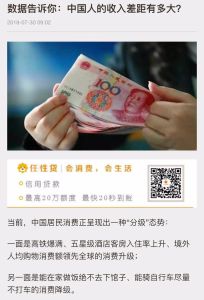Join getAbstract to access the summary!

Join getAbstract to access the summary!
Fu Yifu
What Is the Level of Income Inequality in China?
Suning Institute of Finance, 2018
What's inside?
Will the gap between rich and poor destabilize China?
Recommendation
Experts believe that the growing income inequality in China is a threat to social stability – and thus to the government. Fu Yifu, a researcher at the Suning Institute of Finance, takes a look at the changes in income inequality since the beginning of the 21st century. getAbstract recommends this article to anyone interested in Chinese societal issues.
Summary
About the Author
Fu Yifu is a researcher at the Suning Institute of Finance, which publishes more than 400 articles every month on topics like financial technology, consumer finance, supply chain finance, macroeconomy, regional economy and industrial development.


















Comment on this summary